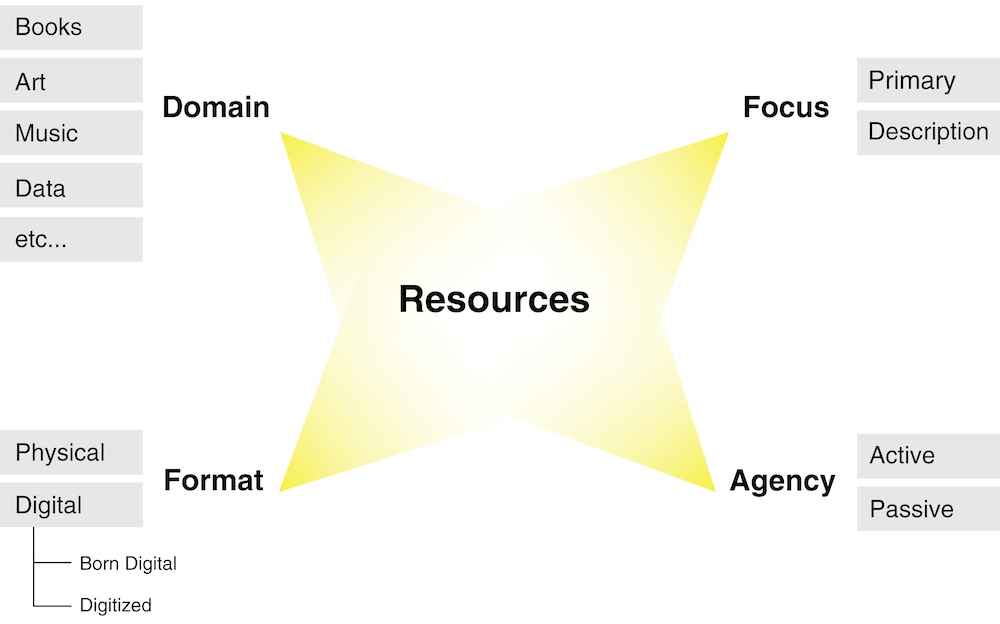4.2. Four Distinctions about Resources
The nature of the resource is critical for the creation and maintenance of quality organizing systems. There are four distinctions we make in discussing resources: domain, format, agency, and focus. Figure 4.1, “Resource Domain, Format, Focus and Agency.” depicts these four distinctions, perspectives or points of view on resources; because they are not independent, we cannot portray these distinctions as categories of resources.

Four distinctions we can make when discussing resources concern their domain (their type of matter or content), format (physical or digital), agency (active or passive), and focus (primary or description).
4.2.1. Resource Domain
Resource domain is an intuitive notion that groups resources according to the set of natural or intuitive characteristics that distinguishes them from other resources. It contrasts with the idea of ad hoc or arbitrary groupings of resources that happen to be in the same place at some time.
For physical resources, domains can be coarsely distinguished according to the type of matter they are made of using easily perceived properties. The top-level classification of all things into the animal, vegetable, and mineral kingdoms by Carl Linnaeus in 1735 is deeply embedded in most languages and cultures to create a hierarchical system of domain categories. ...
Get The Discipline of Organizing: Professional Edition, 4th Edition now with the O’Reilly learning platform.
O’Reilly members experience books, live events, courses curated by job role, and more from O’Reilly and nearly 200 top publishers.

